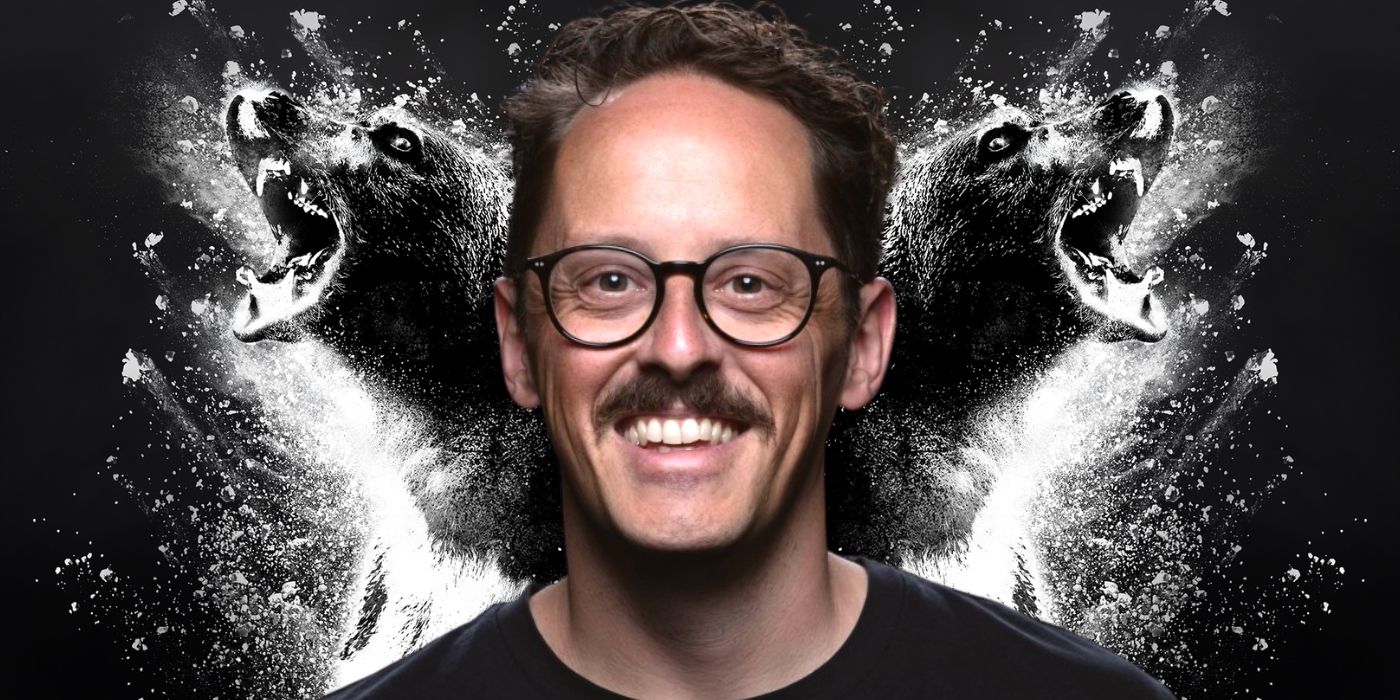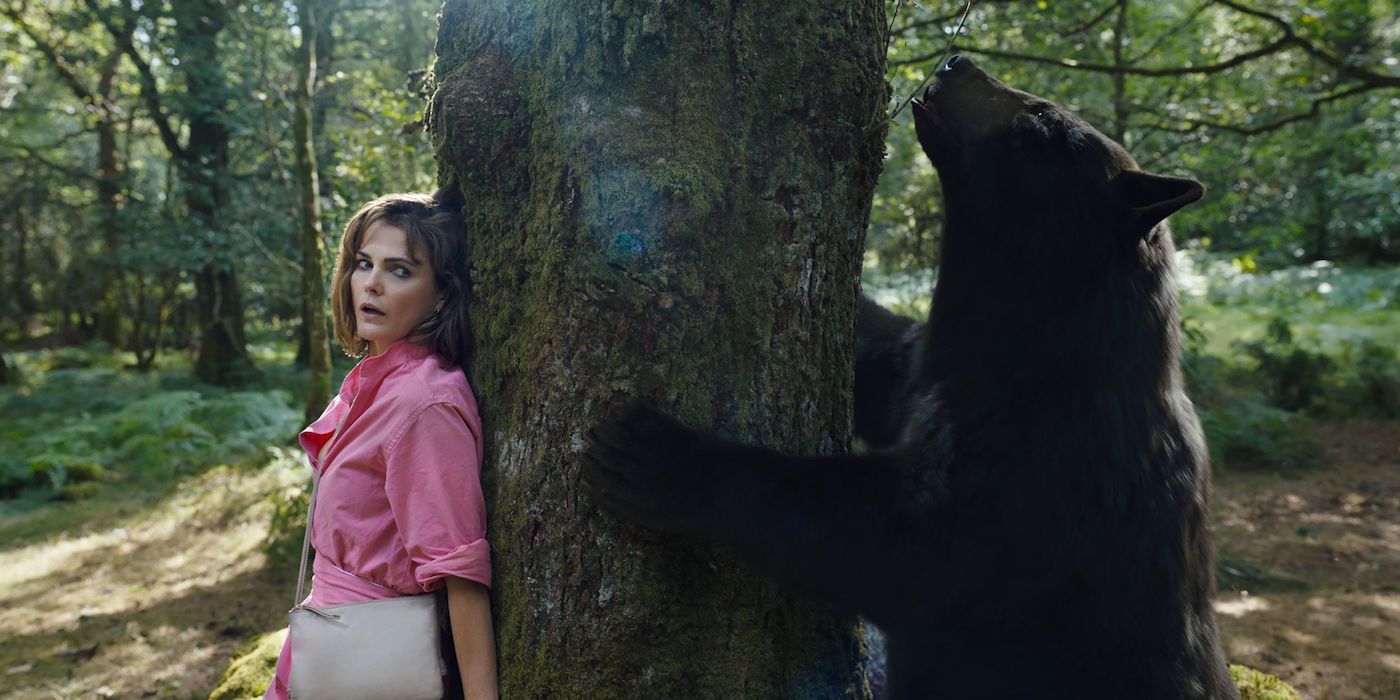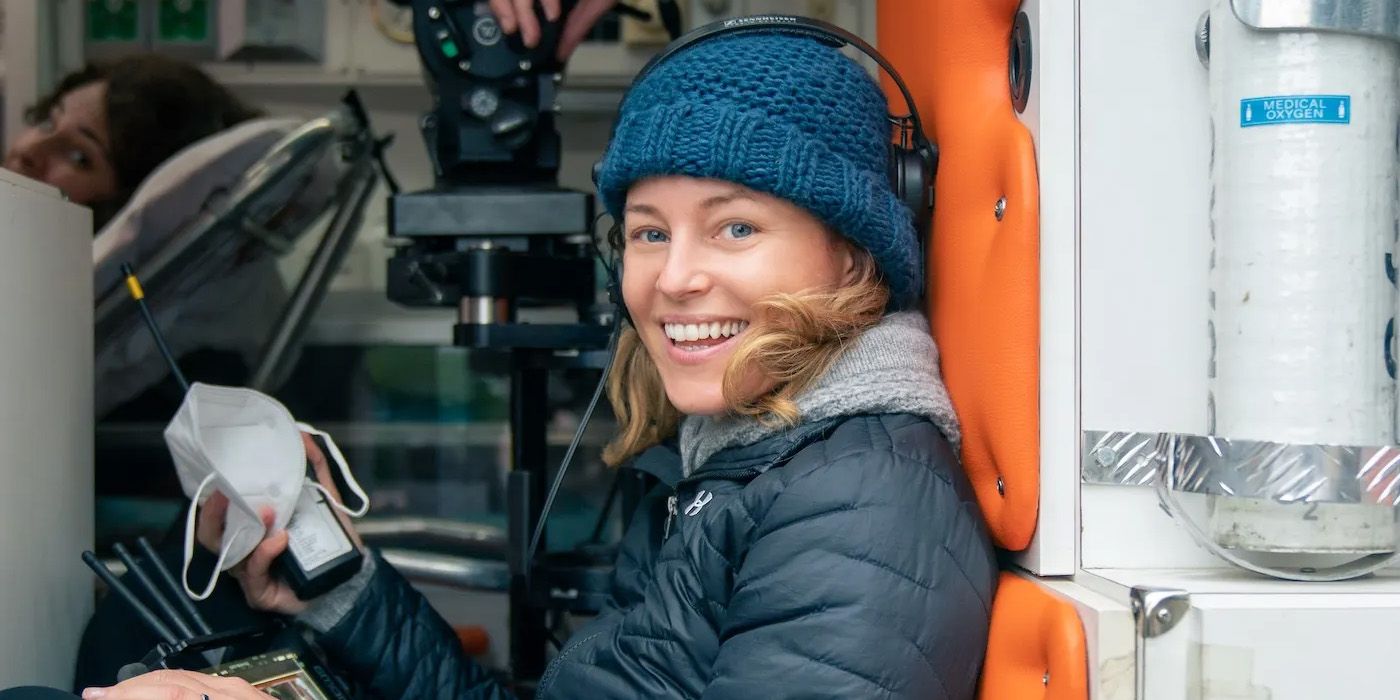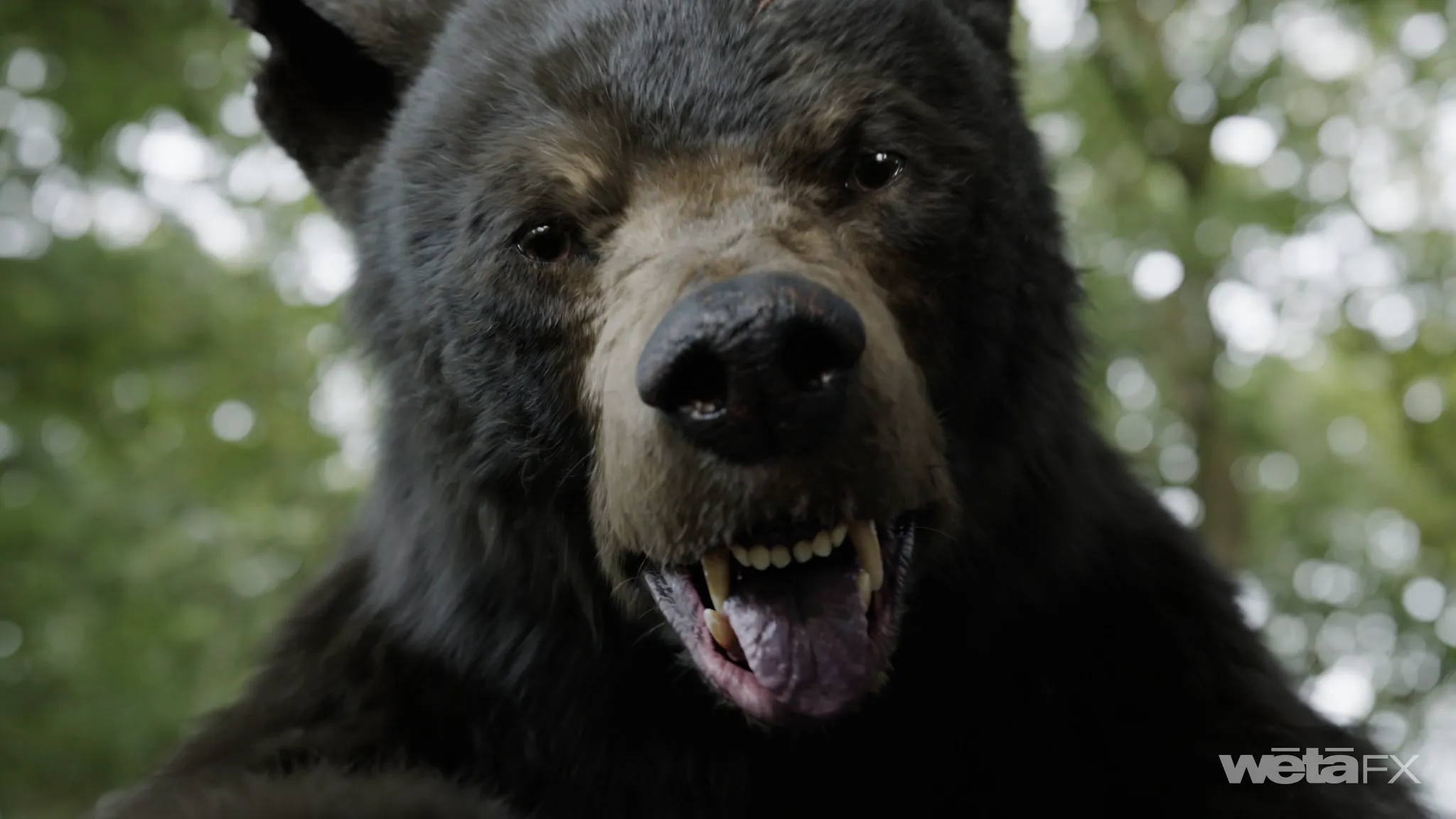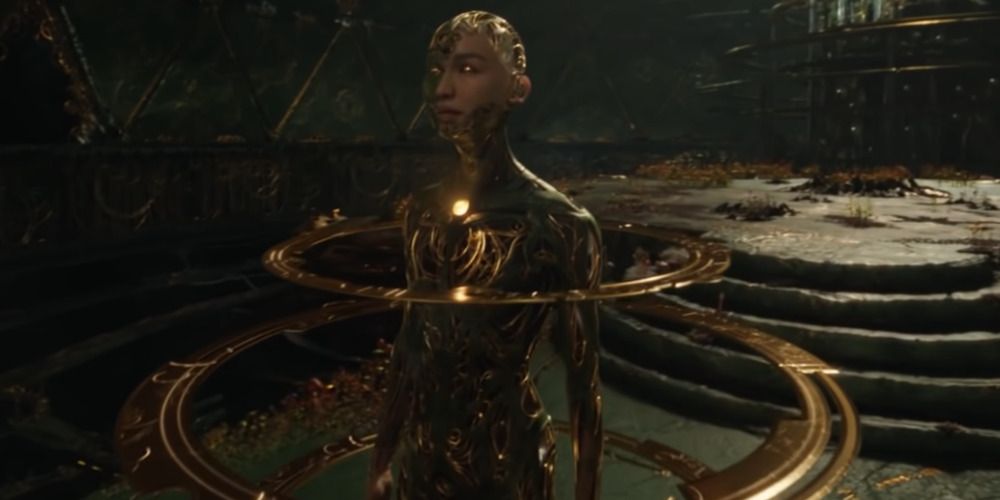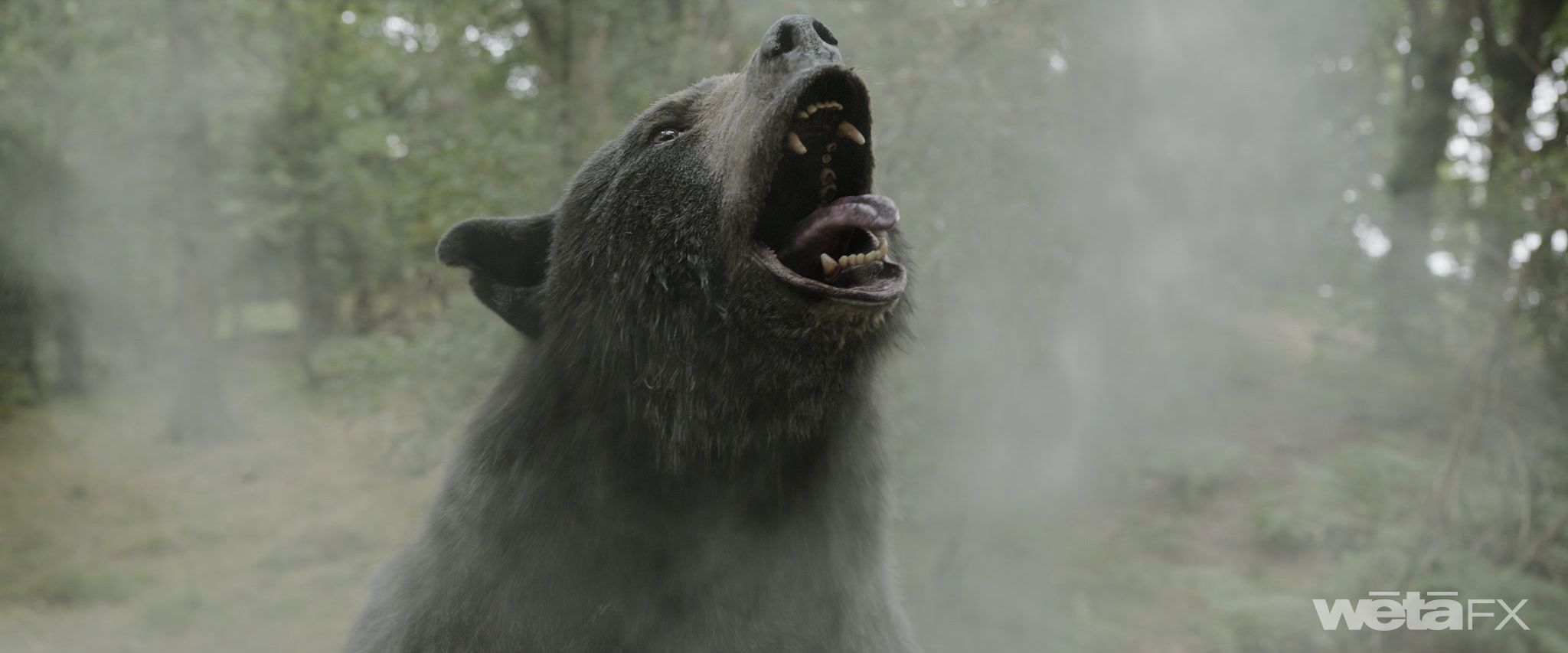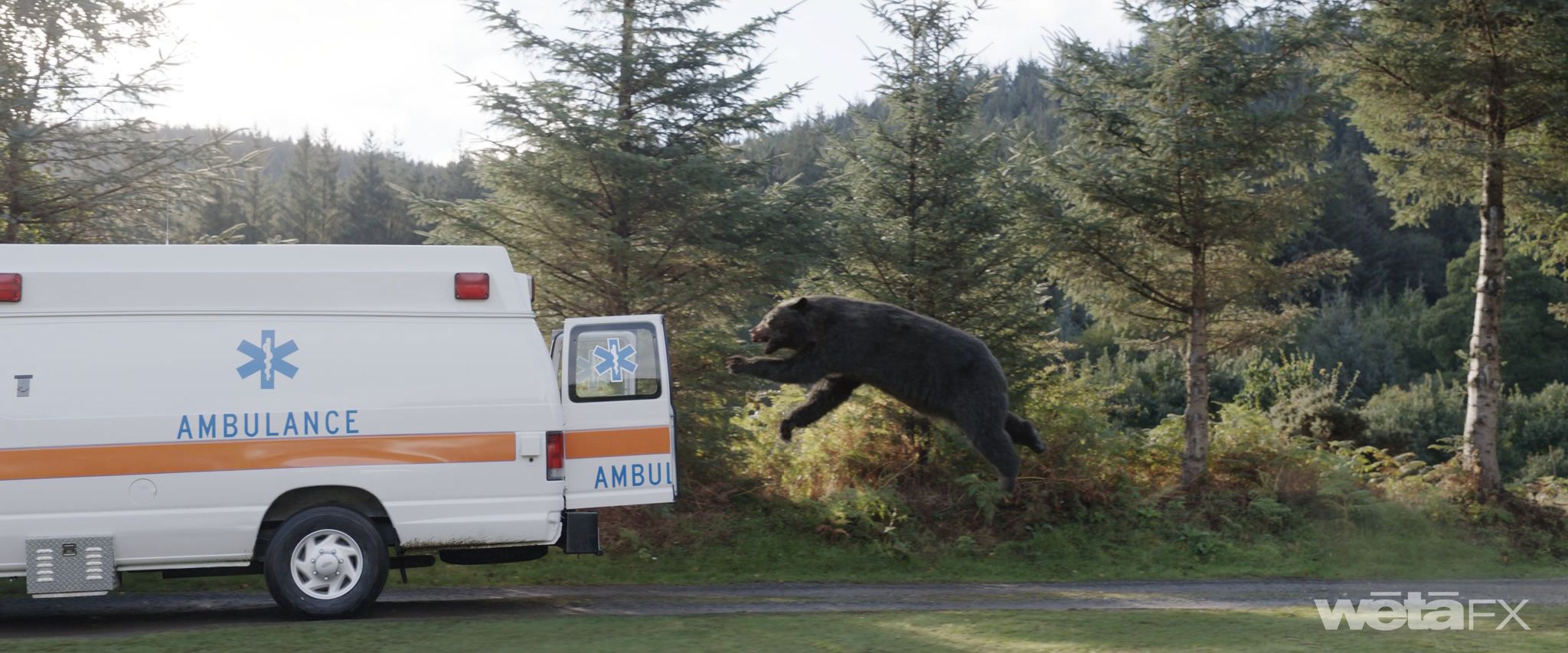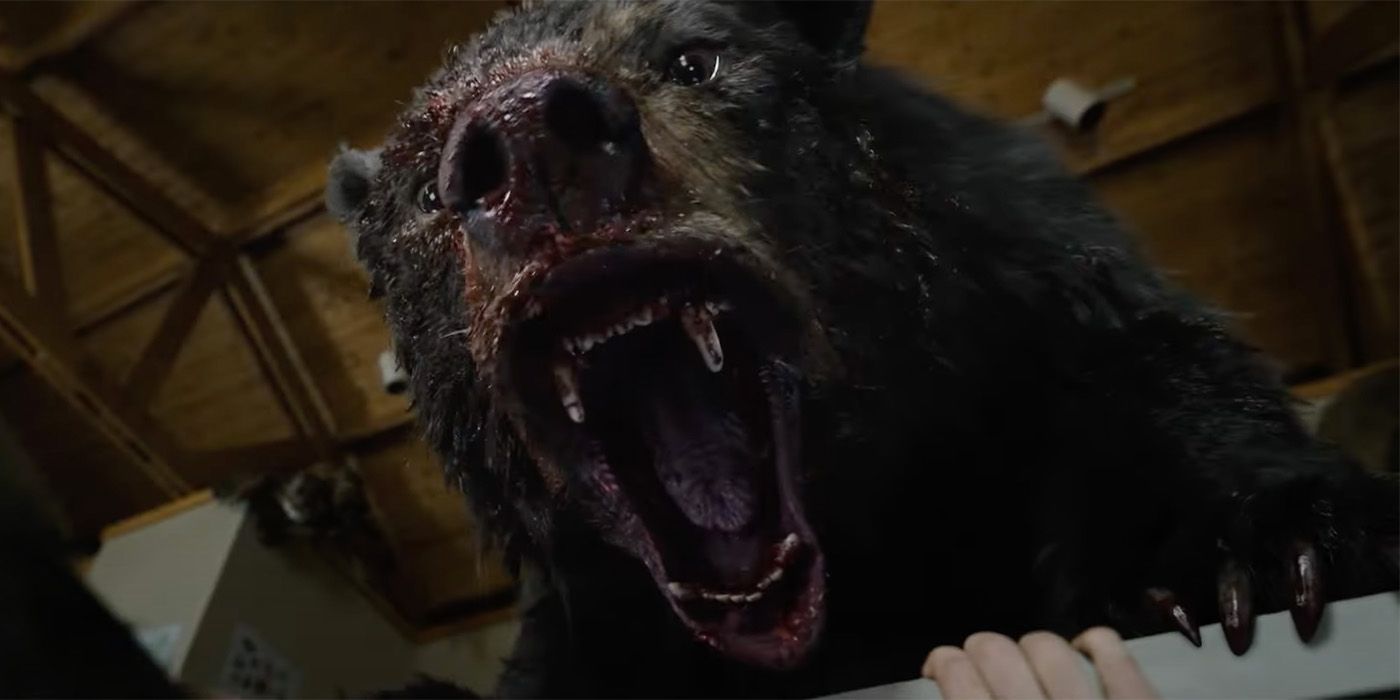When working to bring an outlandish screenplay like Cocaine Bear to theaters, director Elizabeth Banks told Collider “...the only way the movie works is if the bear works.” Considering the horror-comedy has earned over $55 million globally to date, the partnership with Wētā FX, which Banks says, “was just a dream,” paid off exponentially in achieving what the director hoped would be a photorealistic leading lady, affectionately referred to as Cokey the Bear. Recently, Collider’s Nate Richard was able to sit down and chat with Wētā VFX Supervisor Robin Hollander, who shared with us a little about his involvement in one of 2023’s most exciting – and unexpected – releases.
Starring Keri Russell, Ray Liotta, and many others, Cocaine Bear is an ambitious project that toes the line between horror and comedy about a Georgia black bear that ingests a duffel bag full of cocaine. The idea is camp, but Hollander, who previously worked on films like Avatar and The Hobbit: An Unexpected Journey, tells us one of Banks’ “mandates” was that Cokey must be photo-real to give the movie a nature doc feel. After two years of refining and tweaking, Hollander and his team of artists certainly did an unbearably good job capturing the look and personality of Banks' concept, serving some justice to the true story behind the script.
During the interview, Hollander goes in-depth on their collaboration to bring Cokey to life, shares what about the endeavor he’s most proud of, and discusses how this project compares to his time on the big-budget Marvel blockbuster, Eternals. Hollander also details the biggest challenges VFX faces today, what exactly a VFX supervisor does, and what inspired him to make this his career. You can read the full interview below, and be sure to check out Cokey and Cocaine Bear in theaters now.
COLLIDER: I really want to congratulate you on this movie. I had an absolute blast with it. For people who may be reading this, who might not know what a VFX supervisor is, could you maybe explain that?
ROBIN HOLLANDER: Yeah, ultimately I'm responsible for making sure that the client's vision aligns with our internal scheduling and skill sets. I don't know, I never really thought of it that much, but yeah, anything that is computer generated… I think first and foremost, obviously it's a client-facing role, so I make sure that the client is supported in the decisions that they have to make day to day with the choices that they have creatively, and then just making sure how we technically and practically and financially tailor their needs to our pipeline. Is that about a good enough description?
Yeah, I would say so. Another thing that crossed my mind was because this movie is a comedy and the bear looks very real in the movie – it looked like they brought a real black bear onto set – was there any point that you thought of making it more cartoonish, or were you always set on making it lifelike?
HOLLANDER: No, that was the very first brief we had with (director) [Elizabeth Banks]. That was one of the two mandates that she had. One was the personality of the bear. She's like, “Look, this isn't an inherent killing machine and we need to be able to straddle that fine line of she can be funny, she can be vicious, but really she's just a bear trying to go home to her cubs.” But, yeah, point two that she had in the very first meeting was very much, “It has to be photo-real, this has to look like a documentary,” and if it doesn't, it kind of falls apart and it doesn't work.
And I think that's very much the gut feeling we had when we were first approached and we read the script and the outline. You read it and go, “Okay, is it like a Coen Brothers-style movie? Is it more of a mystery? Is it more of a comedy? There's a lot of stuff in here that it could sort of evolve into,” but it definitely felt to me from the get-go like this bear has to be part of the players, you know? It has to look like an actor. So if it's like a Yogi Bear cartoon sort of rendition, it doesn't work, which works really well in some movies, like a sort of Tom & Jerry approach, that's the style, it works, but I think it was very much not for this movie. She wanted this thing to be scary, but also she wanted you to feel for the bear, and I think, seeing the audience reaction, we sort of managed to straddle that line quite well. People end up rooting for Cokey, which I think is really the ultimate goal.
I'm an animal lover so she looked adorable to me, as well as a little bit frightening.
HOLLANDER: Which is good, right? I think a lot of the horror that you see is the unknown. So, I think never quite knowing which way she's gonna flip, that was the brief. I think you couldn't deviate too much in either side because otherwise it's just a killing machine or it's just this comical laughingstock.
I wanted to ask a little bit about the collaboration process with Elizabeth Banks because previously she's worked a lot in straightforward comedy like Pitch Perfect. How much did she collaborate with the VFX? Was it just at the beginning?
HOLLANDER: No, no, no, it was 100%, continuously throughout, start to finish. And I think what was really great is the exposure she had to visual effects. I'm not sure if Pitch Perfect had any in it, maybe some utility stuff. I'm sure Charlie's Angels had a lot of VFX, but potentially more stuff that is grounded… grounded in reality sounds like maybe the wrong term, but, you know, I think she would have had set extensions and explosions, and more stuff that you could do practically, but it's for time constraints and whatnot.
So I think what was really important to us was to explain the process to her from start to finish because it meant that we got her trust early on, we got really good insight from her in understanding the process, we could show her stuff that was potentially a little bit rougher around the edges and something we have to present to someone else. But because she knew that we would take it, she would be like, “Yeah, cool, I don't need to see that again. Just show it to me again when you've done this and this and this because you have explained what this and this and this is in a similar setting.” So, I think it was really great seeing her sort of grow into the role of being really VFX savvy and just really throwing around big technical terms as well. So, it helped us immensely throughout.
And I think in doing so, again, harking back to the brief that she had about the realism, we were able to demonstrate to her the pipeline, how would we approach a build of this the scale, of this kind of nature, and what would be the steps that she would have to sort of approve on, and then also just set expectations. So we would say, “Look, the first time you'll see Cokey lit and with her fur on and everything, she's likely not going to look 100% photo-real yet because that's the first build.” But it's important to me that we can, say, flesh out a whole scene and then the character can build through that scene rather than spending all of our time in making one shot look incredible, and then we haven't learned too much about her other than you are not worried about the quality of it. So I think once she understood the process and understood that, like, “Yeah, I got it, she will only ever get better looking and we can always go back and update where we needed,” I think that opened up a really beautiful sort of collaboration which lasted throughout, from day one to today, if you will.
Is there a visual effect shot in this movie that you were the most proud of, or that you would consider your Mona Lisa?
HOLLANDER: [Laughs] Yeah, I'm really proud of the achievement that our team here has made in just the detail in Cokey’s face, and I think that is most evident in a shot that you sort of blink and you miss it. It's funny because it's the shot where she's opening her eyes. So the shot that Cokey blinks is the shot where you most likely miss all the amazing detail that's in there because it happened so quick in the movie. But it was one of the later shots that came into it because the whole third act was a little bit in flux and all the beats that we wanted to add.
I'm really proud of it because, again, with this sort of tiered approach to the visual effects, we managed to flesh out whole scenes, and we just kept working on the details as and when we needed it. And we got to a point kind of late in the game where we thought like, “Okay, it feels like Liz wants to have a few real ultra close-up shots. Let's make sure Cokey holds up for that scrutiny.” That's what I'm most proud of, how the team stepped up, and we added all this extra detail, which, truthfully, in 90% of the shots you'd miss. If you do a direct comparison, yeah, it looks better, but it's not like it didn't look really great before, but in the shot where the cocaine tumbles down the cliff and it explodes, you get the close-up of the snout and then her eye opening up. If you freeze-frame on those, or if you look at the raw output that we did, that's when I look at it and I go, “Man, I've not seen CG this up close, this detailed, this good.” So yeah, I'm fiercely proud of what the team achieved with those two shots.
I also saw that you worked as a supervisor on the Eternals, the Marvel movie, and I was wondering, what's the difference between working on a smaller budget, or mid-budget movie like Cocaine Bear compared to working with Disney on that huge, 200 million-plus movie?
HOLLANDER: It's an interesting one. I think everyone who's worked on Cocaine Bear really appreciated that it had a bit more of an old-school VFX throwback feel. And what I mean by that is, it was predominantly plate photography and adding one really good-looking asset into the scene, which is kind of rare because I think VFX is such a tent pole for lots of big movies these days. More and more, you’re doing stuff potentially in a virtual stage or on a green screen or blue screen, and you're adding the entire environment into it. So I think that was the big difference from the get-go that everyone really enjoyed because it felt like the early days of when we all started in visual effects where, potentially, visual effects was more of a supporting role because now it's sort of a star player.
But it's interesting you mentioned the Eternals because I do think the Eternals was a little bit of a deviation from Marvel movies where a lot of it had a very gritty photographic sense. (Director) Chloé Zhao, they shot a lot of it on beaches in the Canary Islands, I think. So it had this real photographic grit to it, which to my mind was a little bit of a deviation to how Marvel has been doing movies as well. And I think that was one of the pitches that they had in the press junket as well. So in a weird way, even though that was a huge blockbuster movie, it actually had a huge plate component to it, which was a real joy to work on.
Obviously [there are] no laser beams and magic effects and Cocaine Bear, so I think that was kind of nice. I think the challenges we had were more, maybe less creative in nature, like, “How do we make something that looks cool and otherworldly?” But more like, “How do you make something that people think they know what it looks like?” Like, you could probably imagine what a brick of cocaine raining down from a building should look like, but then when you actually see and you kind of go, “Nah, just something about it is not right. But what is it?” I think that's always the challenge in making something that is somewhat grounded in reality where your brain is telling you, “I should know whether this looks real or not, but I actually don't have a point of reference, whether this is looking real or not.” So I think that that was the distinction, there was potentially more of a real-world challenge than does it look real-world enough, but does it look really cool creatively? I think there's a creativity in solving technical challenges so it's just a slightly different lens that it put on the whole thing.
So I know the world of VFX is constantly changing, and I was wondering, is there something that you can't quite do yet but that you’re hoping to do in the future with other projects?
HOLLANDER: Ooh, this is a tricky one. I mean, prior to [Avatar: The Way of Water] coming along, I would have probably had a few things, but I think those guys and girls, they sort of smashed that out of the park. So, I think with anything it's, potentially, speed. I think we're at a point now where we can do everything pretty well, but the real expensive, or the real costly setups, are things like water or getting eyes really realistically. It's just iteration time, the end of the day, like with water it's computing time, but with things like eyes, it's just pure iteration time.
So I kind of feel we're at a point now, potentially, where it's like the technology has caught up, but it's the hardware that now needs to make the next big leap just so we can have a little bit more of an interactive session with the director. Ideally, if you had a director sitting next to, and you can go, “Look, I can give you all the options,” that could be a good thing, or it could derail the process more. I don't know. But I think at the moment it's just finding time, like review time with your team, with your director, getting stuff sort of iterated. I think that's potentially where there's a little bit of, not a slowdown, but maybe that's an improvement that could be made.
But I think in terms of areas that we've touched onto, I think we've explored most of that and I think… Yeah, to how we gather information like virtual productions is definitely a time that's coming up, and working in the volume on that LED stage I think is a hot topic right now. It's not something that was ever considered for Cocaine Bear, I don't think it would have really lent to more creativity, but I think there's definitely some exploration to do in that space. So, yeah, I don't know, I'm excited to see where it goes.
Was there ever a particular movie that you saw before going into this that really made you want to go into the field of VFX?
HOLLANDER: Yeah, absolutely. Star Wars, the first Star Wars did that for me, and what it was was I didn't really know what it was I was seeing, but I knew that I wanted to do it. And I think in my mind, you know, being a mischievous, I don't know, eight or nine-year-old kid, it just meant like, “Oh, cool, I could blow up things on screen like that. Sounds like fun.” And then, as luck would have it, my dad's an illustrator, used to be a sort of traditional airbrush illustrator, and right around that time, he had to make the shift to computers because he was reading this American Illustrator magazine, it was called, and he came home one day and there was a big article in there that said, “Look, if you don't shift computers in a year, you might as well quit.” And he'd never seen a computer, right? So, he was kind of freaking out, took the leap though, invested in it, and it almost became a hobby for the two of us to just sort of explore this wild new world.
And then basically, through the wholesaler that sold him the computer, that same company was also dealing with all the 3D software at the time, which were these big, high-end, very expensive sort of setups that he'd have commercials. And he was given a showreel, one of these 3D packages, and we checked it out, it was a VHS tape, and I think that's when we made the link like, “Look, they're doing the kind of stuff that they did on Star Wars.” But I think on Star Wars they didn't do it with computers, they did it practically.
So it sort of opened up the curtains to this wild new world. And what's really interesting is, even though it was Star Wars and the original trilogy that set my love for what I do, I'm oddly enough not a Star Wars geek at all. I don't follow the new movies. For me, it's like a piece and part of my childhood, and it's sort of rooted in the history of that, but I'm not a fanboy. I don't really watch the movies. I think the work that goes into them is stunning, and it's inspirational, but it was just that little spark and I think that's what I needed. And I think now the inspiration I get is just seeing what other people do. It's always that sort of… It's almost like an imposter syndrome thingy where you kind of think, “Yeah, what we do is amazing, but oh my God, look at what they're doing,” and I think it's just seeing stuff with fresh eyes.
So the industry as a whole, I think, is the cheerleader that really drives me. And a lot of that is basically because of the original Star Wars, just seeing cool stuff that other people do, and you want to do it as well.
Thank you so much for your time, and congrats on designing the savior of cinema in Cocaine Bear.
HOLLANDER: [Laughs] Thank you so much, I appreciate it. Yeah, it's been really fun to see the reaction, and I was fortunate enough to have seen the movie a few times now with an audience, and it's really tricky if you've been involved with basically every frame, double shot on a movie. You know every gag that's coming and the backstory of everything, so it kind of jades you a little bit, and it takes the humor out of it somewhat, but then seeing people's reactions, it's just like, “Oh, cool. Okay. That's why we did it.” It's easy to forget sometimes, so I appreciate that you enjoyed it.
Yeah, it definitely reminded me of – I hate the term “they don't make them like they used to,” but I really do feel like it's kind of almost like you don't see many movies like that anymore.
HOLLANDER: Exactly, yeah. And I think that is a testament to Liz and everyone at Lord Miller, receiving something that was really wild and wacky, and it could have gone in many ways, but I think they had a good finger on the pulse and looking at what was out there and going, “Cool, how do we make something that's not that?” And then piecing it together slowly. So, you know, I think all the references that Liz quotes in all of her inspirations are bang-on and people seem to like it.
And I think as long as you know what you're in for, you know, it's not a black-and-white French movie, it's far from it, and yes, it has a lot of shock value, but it's kind of in the title, you know, so if you are offended by what you see halfway through, maybe you didn't read the brief well enough. But it's really nice to see that people are just having fun in the cinemas. And also, I think it’s something that you share with friends, right? I think there's a lot of shift of people just watching movies at home, and I think this is really one that you want to go see with all of your mates, you know, Friday night and have dinner afterwards and talk about it.
Yeah, these are the kinds of movies that I feel definitely benefit from seeing on a big screen, or going late at night.
HOLLANDER: Yeah, you talk about it for days afterwards. Especially now with the sort of meme culture that you have, as well, will spawn that and people keep coming back to it a little bit. I think the tricky thing that I see with a lot of parents that I work with is that their younger kids have seen posters, and they hear about it at school and they want to go see it. It’s like, “It's not quite that movie that a 10-year-old maybe could see.” I'm sure some 10-year-olds will be fine with it, but that seems to be the next hurdle is, how do you get it to a younger audience? But I'm not sure if there is a PG-13 edit for the movie. I'm not sure if it would work [laughs].
Cocaine Bear is in theaters now.

